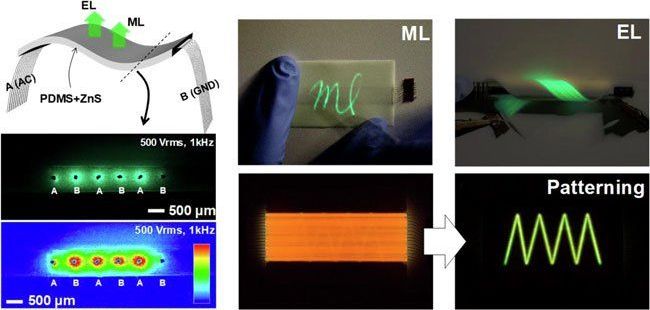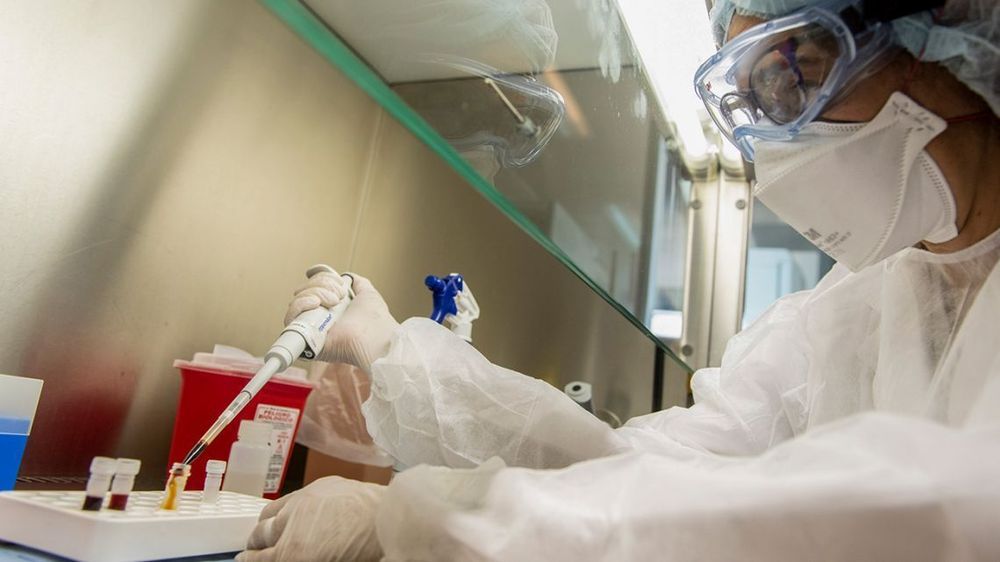Comet Borisov, only the second interstellar object spotted by astronomers, shed at least one big chunk as it rounded our sun.
DAEGU, South Korea, April 6, 2020 — Luminescence technology developed at Daegu Gyeongbuk Institute of Science and Technology (DGIST), using an in-plane electric field generated in parallel to the light-emitting layer of an LED, could help improve the efficiency of light-emitting elements used in billboards and banners. According to the research team, the LEDs produced this way emit light in a more flexible, stable way than conventional LEDs.
“Collisional cooling has been the workhorse for cooling atoms,” adds Nobel Prize laureate Wolfgang Ketterle, the John D. Arthur professor of physics at MIT. “I wasn’t convinced that our scheme would work, but since we didn’t know for sure, we had to try it. We know now that it works for cooling sodium lithium molecules. Whether it will work for other classes of molecules remains to be seen.” MIT School of Science, Harvard — MIT Center for Ultracold Atoms, RLE at MIT — Research Laboratory of Electronics at MIT, #research #supercooledatoms #nanokelvin #WolfgangKetterle
Technique may enable molecule-based quantum computing.
Scientists in Argentina decipher complete genome of SARS-Cov-2. Work by ANLIS-Malbrán Institute specialists will allow experts to follow evolution of virus in Argentina, ensure quality of diagnosis and contribute to development of vaccine.
If you’re curious about the origins of the COVID-19 pandemic and its relationship to animals, I’d like to recommend an excellent interview with a bat virus expert who was in Wuhan, China at ground zero in mid-January. He has been involved in a series of investigations of viral epidemics since the mid-1990s.
Ira Pastor, ideaXme life sciences ambassador, interviews Dr. Linfa Wang, director of the Program in Emerging Infectious Diseases at the collaborative Duke-National University of Singapore Medical School in Singapore.
Ira Pastor Comments:
As we sit here in 2020 in the middle of the COVID-19 global pandemic, we’re hearing terms like “zoonotic disease,” “viral spillover,” “intermediate species,“as well as quite a bit of references to bats, the potential natural reservoir of COVID-19 virus.
As such, a leading global thought leader at the epicenter of these domains has taken the time out of his busy schedule to join us for our episode today.
Not only have all the patients survived, according to Pluristem, but four of them showed improvement in respiratory parameters and three of them are in the advanced stages of weaning from ventilators. Moreover, two of the patients with preexisting medical conditions are showing clinical recovery in addition to the respiratory improvement.
“We are pleased with this initial outcome of the compassionate use program and committed to harnessing PLX cells for the benefit of patients and healthcare systems,” said Pluristem CEO and president Yaky Yanay. “Pluristem is dedicated to using its competitive advantages in large-scale manufacturing to potentially deliver PLX cells to a large number of patients in significant need.”
Pluristem’s PLX cells are “allogeneic mesenchymal-like cells that have immunomodulatory properties,” meaning they induce the immune system’s natural regulatory T cells and M2 macrophages, the company explained in a previous release. The result could be the reversal of dangerous overactivation of the immune system. This would likely reduce the fatal symptoms of pneumonia and pneumonitis (general inflammation of lung tissue).
Abstract: Quantum optics is the study of the intrinsically quantum properties of light. During the second part of the 20th century experimental and theoretical progress developed together; nowadays quantum optics provides a testbed of many fundamental aspects of quantum mechanics such as coherence and quantum entanglement. Quantum optics helped trigger, both directly and indirectly, the birth of quantum technologies, whose aim is to harness non-classical quantum effects in applications from quantum key distribution to quantum computing. Quantum light remains at the heart of many of the most promising and potentially transformative quantum technologies. In this review, we celebrate the work of Sir Peter Knight and present an overview of the development of quantum optics and its impact on quantum technologies research. We describe the core theoretical tools developed to express and study the quantum properties of light, the key experimental approaches used to control, manipulate and measure such properties and their application in quantum simulation, and quantum computing.
A landmark proof in computer science has also solved an important problem called the Connes embedding conjecture. Mathematicians are working to understand it.








